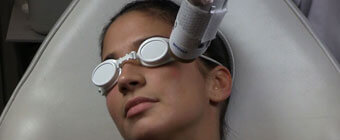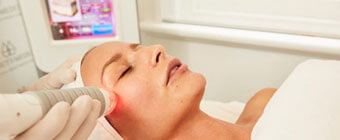Peyronie’s Disease Treatment in Miami (Aventura), FL

Peyronie’s disease—also known as Peyronie disease or penile fibrosis—is a medical condition in which scar tissue (plaque) shapes in the penis, causing it to curve.
The plaque development forms within the tunica albuginea—the fibrous connective tissue in the penis responsible for trapping blood to sustain an erection—causing the penis to improperly stretch (curve or bend) during an erection.
While the plaque is noncancerous, it can cause significant pain and sexual dysfunction in men, interfering with their daily lives and causing ridiculous embarrassment.
Luckily, Peyronie’s disease is treatable, and most men are able to return to optimal sexual performance through noninvasive therapy.
To schedule a consultation with a healthcare provider in Miami (Aventura) that specializes in Peyronie’s disease treatment, call (305) 934-9149 or contact Dr. Nina G.,MD, She an Anti-Aging and regenerative medicine expert.
Causes of Peyronie’s Disease
Though there is no particular known cause for Peyronie’s disease, there are a number of reasons which appear to contribute to the manifestation of Peyronie’s disease. These are as follows:
· Intense or repeated penile injuries from activities such as sexual intercourse, physical activity or other form of physical trauma
· Autoimmune disease, particularly conditions affecting connective tissue
· Age-related changes to the elasticity of penile tissues (men between the ages of 40 – 70 appear most affected)
· Family history
Peyronie’s Disease Symptoms
Ranging in severity, Peyronie’s disease symptoms can worsen over time or appear quickly. The most frequently experienced symptoms include:
· Crooked or bent penis
· Erectile dysfunction, in which a man has difficulty getting or keeping an erection
· Pain with or without an erection
· Lumps (plaque) which can be felt under the skin
· Penis shortening
Peyronie’s Disease Treatments
If you are experiencing pain or penis curvature, it is important to seek care from a healthcare provider, especially if it prevents you from having sexual intercourse or healthy intimate relationships.
Your healthcare provider will begin by reviewing your medical and family history in addition to a physical exam in which he or she will examine your penis for signs of plaque.
If a physical exam fails to produce evidence of plaque, or your healthcare provider would like to pinpoint the exact location of the plaque buildup, imaging tests such as an X-ray or ultrasound may be required.
There are several Peyronie’s treatment options you will need to consider, including:
· Surgery
· Oral, topical and injectable medications
· Vacuum devices
· Extracorporeal focused shock wave therapy
Surgery
Recommended only in long-term Peyronie’s disease cases in which severe penis curvature is present and noninvasive treatments fail to work, surgery can help to remove scar tissue and correct curvature.
The most common Peyronie’s disease surgeries include a penile implant to help sustain an erection and straighten the penis.
Grafting to cover openings in the tunica albuginea once scar tissue is removed is another method.
Plication, in which a surgeon pinches or removes a piece of tunica albuginea on the opposite side of the plague buildup on the penis to help straighten it.
As with any surgical procedure, these surgeries have risks including shortening or numbness in the penis.
Medication
Medication focuses on reducing plaque to reduce the penis curvature and overall pain. Collagenase is the only FDA-approved medication for Peyronie’s disease; collagenase is injected into the scar tissue to help break it down. While clinical trials prove it can help to reduce the curve, this medication can cause severe side effects which should be considered when evaluating your treatment options. These side effects include penile fractures, allergic reaction, bleeding, swelling, itching, erection problems and painful sex.
Vacuum Devices
Vacuum devices try to stretch and bend the penis to regain a normal shape through mechanical traction. It needs to be used daily use, over the course of several months, through the use of an at-home, inflatable vacuum cylinder. While vacuum devices can provide small improvements to penis curvature, they are unable to provide significant improvements in men with moderate to severe penis curvature, and men who experience erectile dysfunction in addition to Peyronie’s disease.
Extracorporeal Shock Wave Therapy
Shock wave therapy utilizes high frequency waves to open blood vessels and break down plaque, thereby reducing the curvature of the penis and correcting any potential erectile dysfunction. It is one of the only drug-free, surgery-free therapeutic options for men with Peyronie’s disease that has proven its effectiveness in clinical trials.
Focused Shock Wave Therapy With Our Storz Medical Wave Device from Switzerland
We are pleased to offer extracorpoeral focused shock wave therapy (ESWT) to help correct Peyronie’s disease and erectile dysfunction in men. Each ESWT session take only 20-30 minutes in the comfort of our office and leaves you with no undesirable side effects or downtime.
Don’t let the discomfort and shame of Peyronie’s disease control your sexual life and overall well being. Contact our office today to make an appointment with an experienced healthcare provider trained in shock wave therapy for Peyronie’s disease. Call (305) 934-9149 or contact Dr. Nina G., MD at our Booking Page
Categories
Categories
Get Updates:
Lightstim post microneedlinghttps://t.co/OY5xpFFjgs pic.twitter.com/57WMJwr2LD
— Miami Aesthetic Institute (@Miami_Aesthetic) January 8, 2020




















